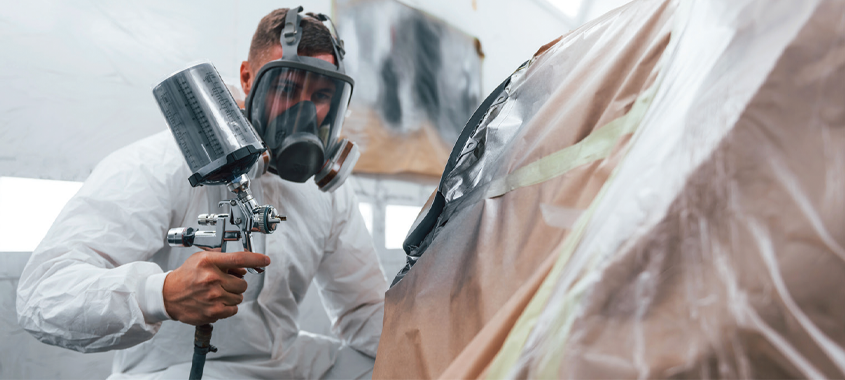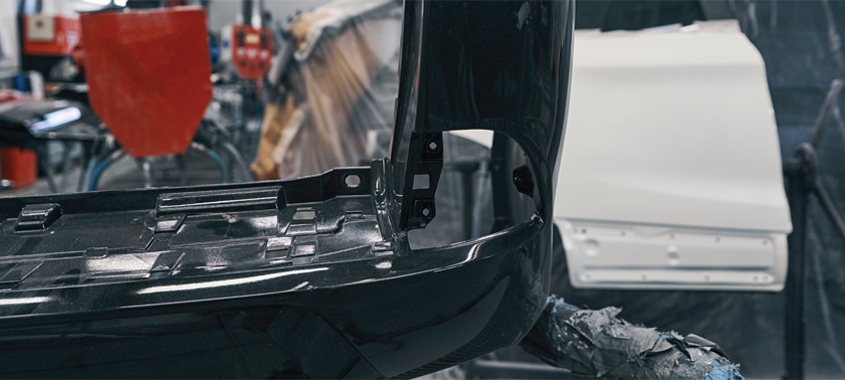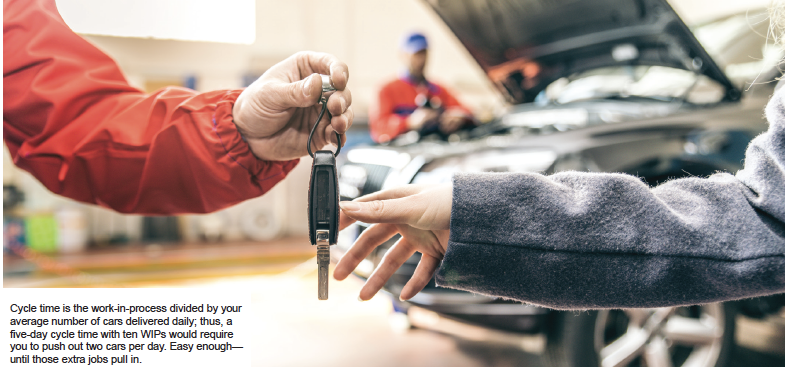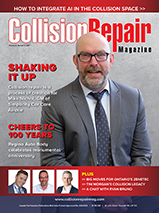MIND YOUR BUSINESS
SET YOUR SCHEDULING STRAIGHT
By Allison Rogers
When you put a vehicle into production, are you 100-percent confident it’s ready to be repaired and will glide through your shop with no stoppages?
In a time like today, it may be tempting to take in every set of keys tossed your way— but it doesn’t take a rocket scientist to know that’ll land you in a world of trouble. When it comes to repairing scheuling, a 2018 survey conducted by Dave Luehr’s Elite Body Shop Solutions found that, out of 200 people surveyed, 59 percent made their schedules by counting estimated labour hours; 22 percent tied their schedules to the number of vehicles, and ten percent admitted to simply winging it.
It’s easy to understand why the ‘grab the keys’ mindset is a default, especially in COVID-19 times. Certain business owners find a sense of comfort in holding a stockpile of work, but the same people will oftentimes revert to complete shutdown in times of stress, saving the problem for another day, when it will swell twice as big.

It’s hard for painters to not look at dismantled parts as a carrot from a string. There may be certain colours where it makes sense to jamp and hang your sheet metal before painting—but efficiency increases if your painter only visits those parts once.

What looks to be a $2,000 job on-sight can very realistically double, triple or more when the panels are peeled back, especially in today’s camera and sensor-heavy vehicles.

What’s your answer when asked about your cycle times? Do you shell out the cliches or take the time to consider that you might just have too much work on your docket? You can blame the insurance adjusters or your technicians; but not before you take at the inner workings of your scheduling and production.
Be realistic with your output
Say you have ten cars in process and a five-day cycle time, outputting an average of two cars per day. You get a call from an adjuster—there’s been a four-car fender bender six blocks from your shop! All four drivers want their cars to go to you; can you take them?!
You haven’t magically manifested new staff, nor have they grown extra limbs. Your output, in most cases, will stay the same. Cycle time is the work-in-process divided by your average number of cars delivered daily; thus, a five-day cycle time with ten WIPs would require you to push out two cars per day. Easy enough—until those extra jobs pull in.
Despite any comfort you may find in having lots to do, excessive inventory is a key contributor to poor cash floor, wasted materials and resources. Not to mention, when everyone is rushing toward the common goal, the mission of the job can be overlooked; in a nutshell, your repair may not be the best it could’ve been, lines can be missed on repair sheets and valuable dollars are overlooked.
Single file, please
While it’s not fruitful to simply toss blame on your team, you can help guide your technicians and painters on a path to productivity. Oftentimes—especially when young, keen staff—you’ll see technicians try to ‘batch’ jobs together, roughing out multiple jobs and mixing materials in bulk for application.
For one, this can lead to overproduction; plus, if you’re working with filler and it dries before you’ve cleared your first task, you are out of luck. Try again.
On the booth end of things, it’s hard for painters to not look at dismantled parts as a carrot from a string. There may be certain colours where it makes sense to jamp and hang your sheet metal before painting—but efficiency increases if your painter only visits those parts once.
Mind the gap
What looks to be a $2,000 job on-sight can very realistically double, triple or more when the panels are peeled back, especially in today’s camera and sensorheavy vehicles.
If you do not triage your vehicles already, it’s a practice you may want to consider. On average, a CAT 1 (category 1) repair is a job between $0 and $1,499; a CAT 2 ranges from $1,500 to $3,999 and CAT 3 encompasses anything more than $4,000.
You don’t have to follow any stringent principles, though: it can be as easy as filing a chart to reflect your different job sizes. If there’s no slot left for the type of job you’re looking to take in, you don’t have the bandwidth.
In theory, yes—but you need to break your work down into an optimum mix, not just work to make the sheet make sense. Be cautious about bringing in too many small jobs to fill the schedule.
Scheduling is a beast—there’s no dodging that. Whether there’s not enough work, too much work, techs on vacation or unexpected jobs, you’re never going to get a grip on it all at once. At most, you can do your best to plan the process and stop the possibility of bottlenecks in its tracks.





















